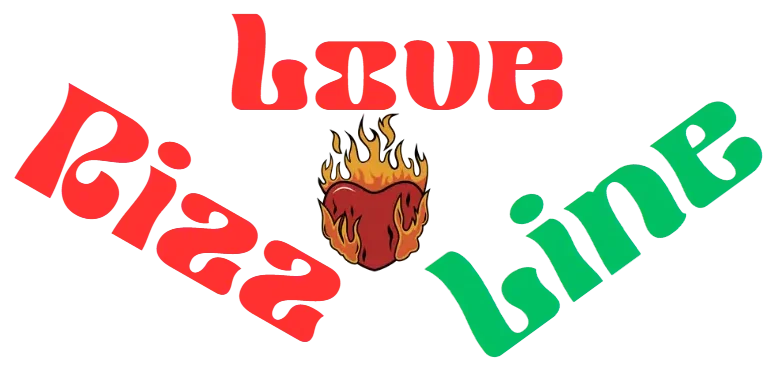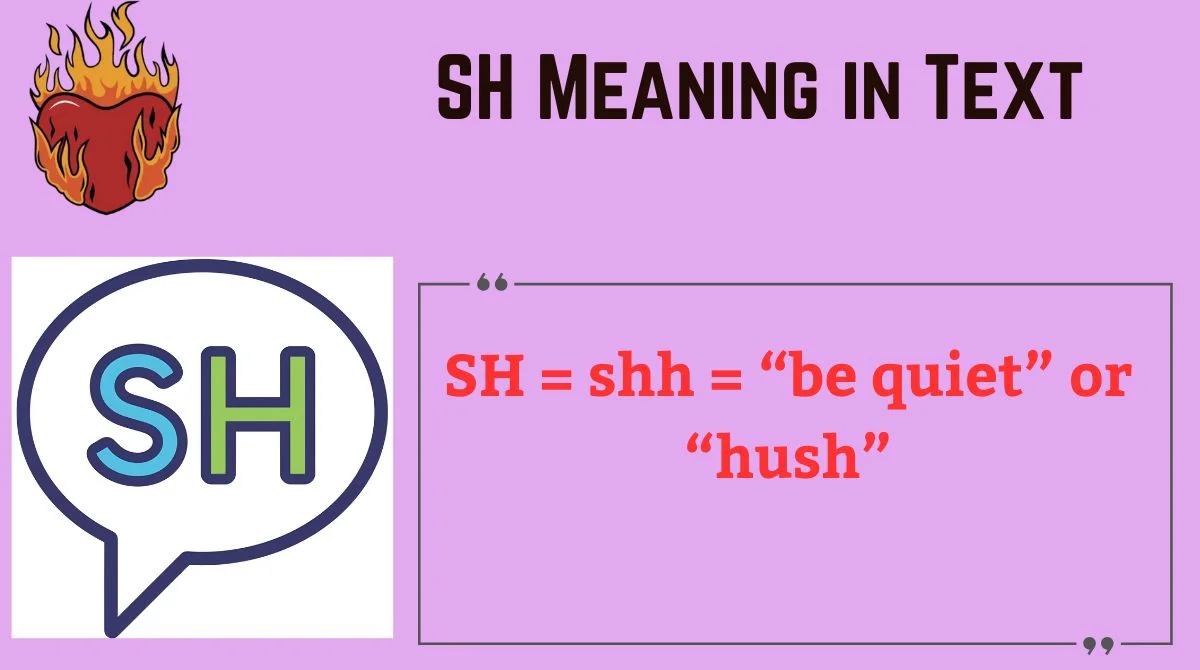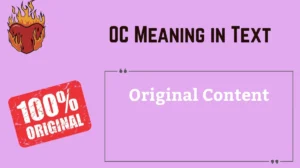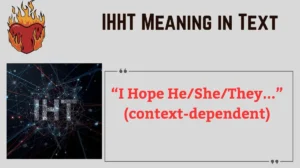In the fast-paced world of texting and social media, abbreviations and acronyms have become part of everyday communication. One shorthand that often leaves people puzzled is “SH”.
Whether you’ve seen it in a chat with friends, on a dating app, or even in a professional group chat, understanding what SH means can prevent confusion and even awkward situations.
In this guide, we’ll break down everything about SH—its meaning, context, history, misconceptions, and how to respond appropriately. By the end, you’ll be confident reading, using, and interpreting SH like a pro.
What Does SH Mean? (Definition & Meaning)
SH is a text abbreviation that usually stands for “shh”, an onomatopoeic representation of telling someone to be quiet. In text messaging, it’s often used playfully or jokingly.
Key points:
- SH = shh = “be quiet” or “hush”
- Used to signal secrecy or quietness in conversations
- Can carry a tone of teasing, playfulness, or mild urgency
Example in conversation:
Friend 1: “I got an A on my test!”
Friend 2: “SH! Don’t tell everyone yet!”
Variations:
- SHH
- Shh!
- sh
Background & Origin
The origin of SH comes from the sound people make to quiet someone, which has been phonetically written as “sh” for centuries. Its adoption into digital communication started with SMS texting in the early 2000s, where brevity was key.
Over time, SH has evolved from just meaning “be quiet” to carrying additional tones like:
- Secrecy: “Don’t tell anyone this”
- Teasing: Friendly banter among peers
- Emphasis: Highlighting the importance of silence
Fun Fact: Early internet forums like ICQ and MSN Messenger helped popularize SH as shorthand among teens and young adults.
How SH Is Used in Different Contexts
Understanding SH depends heavily on context. Here’s how it appears in different settings:
Casual Texting Between Friends
- Playful teasing: “SH! You’re embarrassing me!”
- Indicating surprise or excitement quietly
Online Gaming & Community Chats
- Alerting teammates quietly in chat without drawing too much attention
- Abbreviated forms like SHH or sh are common
Dating Apps & Social Media
- Suggesting secrecy in a flirty context: “SH… I like you 😉”
- Playful hints without being overt
Professional or Semi-Formal Communication
- Generally not recommended in professional emails
- Can be acceptable in casual team chats like Slack, only with context
Table: SH Usage Across Contexts
| Context | Typical Meaning | Tone | Example |
|---|---|---|---|
| Casual texting | Be quiet / playful secret | Fun / playful | SH! Don’t spoil the surprise |
| Online gaming | Quiet / alert | Neutral / urgent | SH, enemy spotted! |
| Dating apps | Flirt / secret | Playful / flirty | SH… I have a crush on you 😏 |
| Professional messaging | Rarely used | Informal / light | SH, let’s not mention this yet |
Common Misunderstandings & Clarifications
SH can be confusing for beginners. Here are common misconceptions:
- Misconception 1: SH = SMH
- Clarification: SMH = “shaking my head,” expressing disbelief. SH = “be quiet.”
- Misconception 2: SH is rude
- Clarification: Tone matters. Used playfully among friends, it’s friendly, not offensive.
- Misconception 3: SH is outdated
- Clarification: SH remains common in texting, social media, and online chats, especially among younger audiences.
Tip: Always read the context and the relationship between the speakers. Tone in digital communication is key.
SH vs. Similar Terms
There are a few abbreviations that look or sound similar to SH. Knowing the differences prevents confusion:
| Term | Meaning | Use Case |
|---|---|---|
| SMH | Shaking My Head | Express disbelief or disappointment |
| SHH | Be quiet / hush | Same as SH, sometimes more playful |
| SS | Screenshots | Digital conversations, unrelated to silence |
| SH! | Be quiet urgently | Adds emphasis with exclamation |
Pro Tip: Context is king. For instance, “SH!” in a group chat is very different from “SMH” in a social post.
How to Respond to SH
Responding to SH depends on tone and context. Here are some tips:
Friendly / Playful SH:
- Respond with a laugh: “Haha, okay I’ll be quiet 😅”
- Mirror playfulness: “SH… you’re worse than me!”
Flirty / Secret SH:
- Teasing reply: “SH… now you’ve got me curious 😉”
- Agreeing playfully: “Your secret’s safe with me!”
Professional SH:
- Keep it neutral: “Understood, I’ll hold off on sharing this info.”
Regional or Cultural Differences
While SH is globally recognized in English-speaking countries, its interpretation can vary slightly:
- US / UK / Canada: Common in casual texting, universally understood as “be quiet.”
- Australia / New Zealand: Often used jokingly among friends; less common in professional settings.
- Non-English speaking regions: Might require context; SH may not be intuitive.
Fact: Emojis often accompany SH to clarify tone, especially in cultures where brevity and playfulness matter.
Hidden or Potentially Offensive Meanings
Most of the time, SH is harmless. But occasionally:
- Overuse can feel dismissive or rude if misinterpreted.
- In sensitive conversations, telling someone “SH” could seem patronizing.
- In online debates, SH can be used aggressively: “SH! You don’t know what you’re talking about.”
Rule of Thumb: Always assess your audience before using SH in serious or unfamiliar settings.
Usage in Online Communities & Dating Apps
SH thrives in platforms where quick communication is key.
- Reddit / Discord: Users often type SH in threads or chats to hush others or signal secrecy.
- TikTok / Instagram DMs: Often paired with emojis, GIFs, or playful tones.
- Dating apps: SH adds mystery or playful secrecy, making conversations more engaging.
Case Study:
A user on a dating app sent:
“SH… I can’t stop thinking about our last date 😏”
The playful secrecy encouraged engagement and a positive response, showing how context can turn SH into a conversational tool.
Suitability for Professional Communication
While SH is playful and widely used socially, its professional use is limited:
Good Practices:
- In informal team chat apps like Slack, SH can lighten the mood.
- Avoid SH in formal emails, LinkedIn messages, or corporate documents.
Example of safe professional use:
“SH… the client presentation is ready for review before the meeting.”
- Here, it signals secrecy internally without being rude.
Example of what to avoid:
“SH, your report is late!”
- Can appear unprofessional or disrespectful.
Frequently Asked Questions (FAQs)
What does SH mean in texting?
Answer: SH usually stands for “shh,” meaning “be quiet” or “hush,” often used playfully.
Is SH the same as SMH?
Answer: No, SMH means “shaking my head” to express disbelief, while SH means “be quiet.”
Can SH be considered rude?
Answer: It depends on context. Among friends, it’s usually playful. In serious settings, it can seem dismissive.
Where is SH commonly used?
Answer: SH is used in casual texting, social media, dating apps, and online communities like Discord or Reddit.
Should I use SH professionally?
Answer: Rarely. Only acceptable in informal team chats, never in emails or official communications.
Conclusion
Understanding SH meaning in text is more than just knowing it stands for “shh.” Context, tone, and relationship matter. From playful teasing among friends to subtle flirting on dating apps, SH adds nuance to digital conversations.
By recognizing how SH is used, avoiding common misconceptions, and responding appropriately, you can communicate clearly and avoid misunderstandings. Next time you see SH in a chat, you’ll know exactly what it means—and maybe even use it confidently yourself.

Mark Peter is the creative mind behind RizzleLineLove.com, your go-to hub for witty, flirty, and downright hilarious pick-up lines. With a passion for blending humor and charm, Mark crafts content that sparks conversations, breaks the ice, and adds a playful twist to everyday moments.
Whether you’re looking to impress your crush, make your friends laugh, or spice up your social media captions, his work is all about helping you connect — one clever line at a time.



